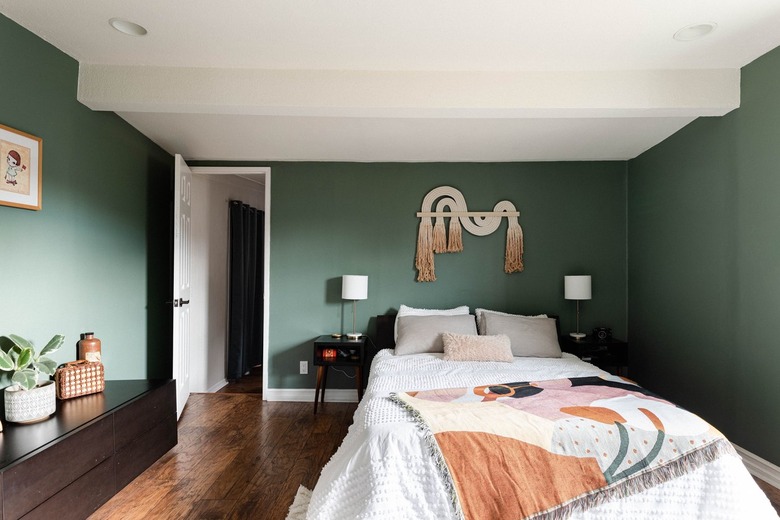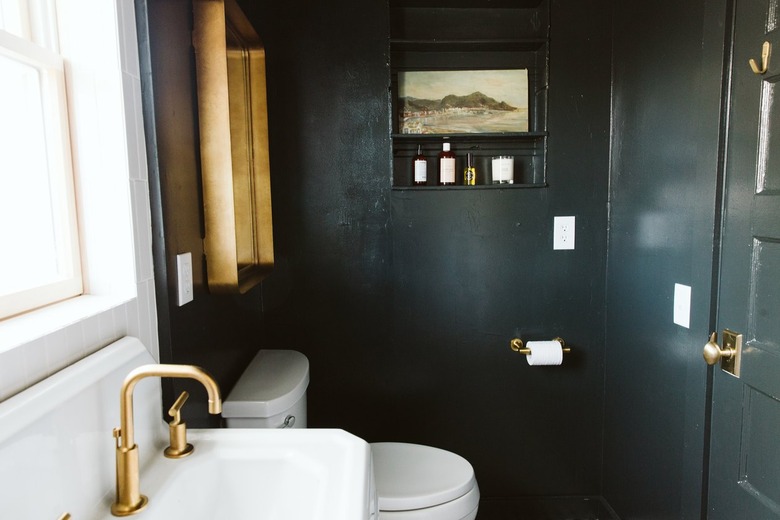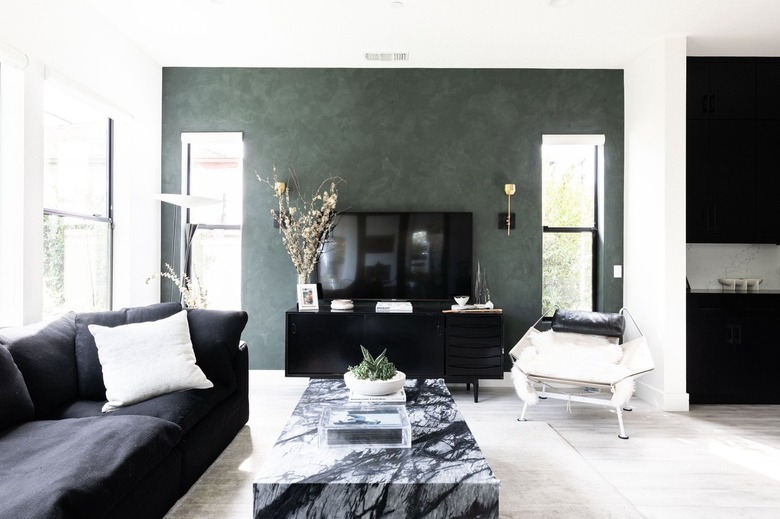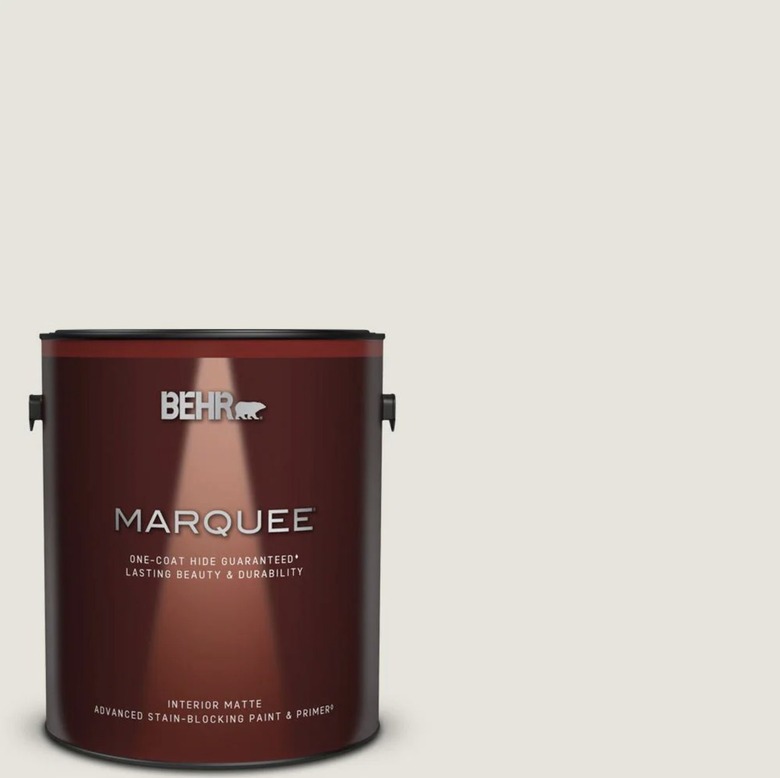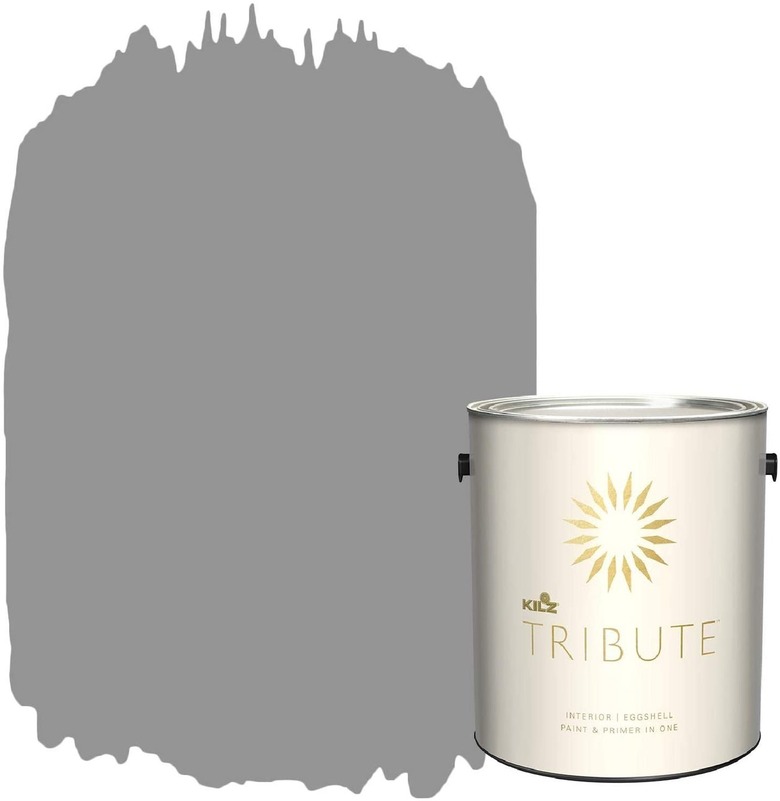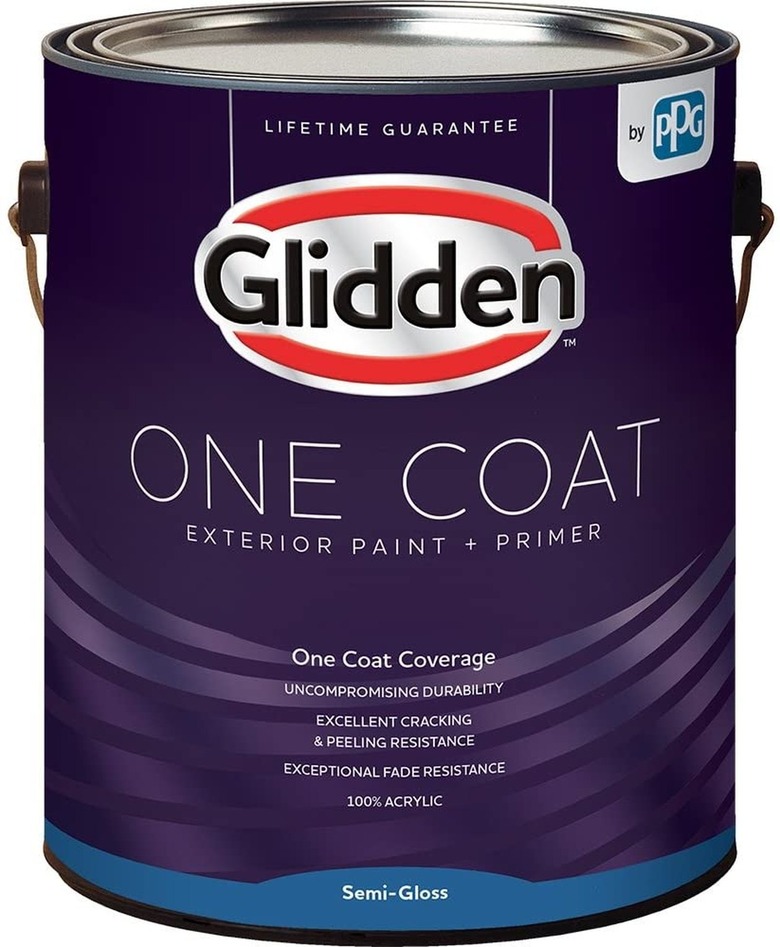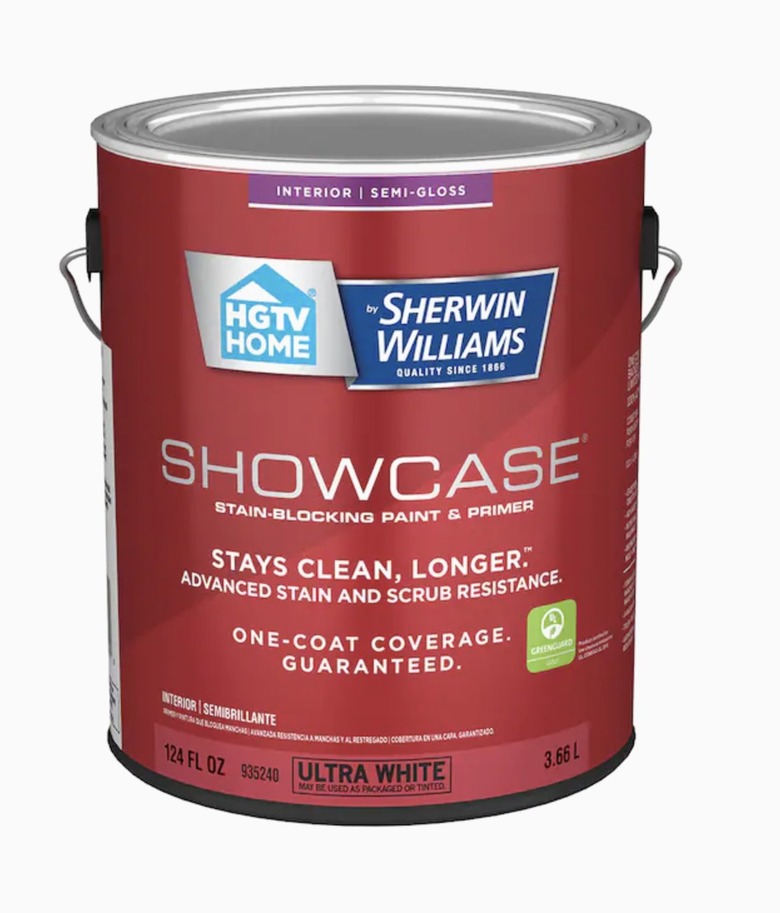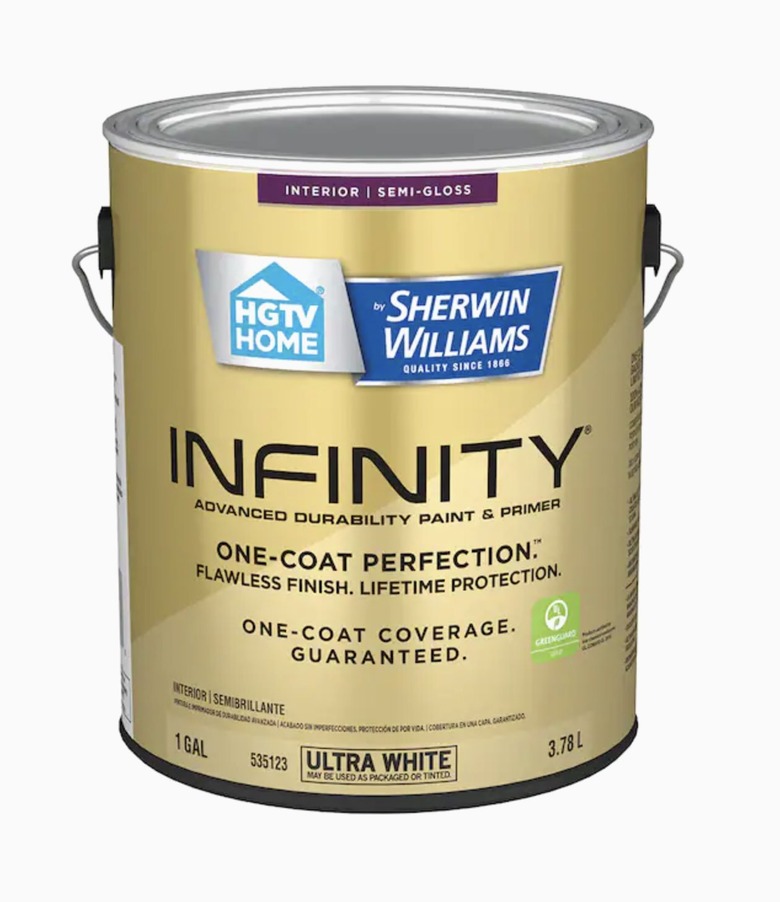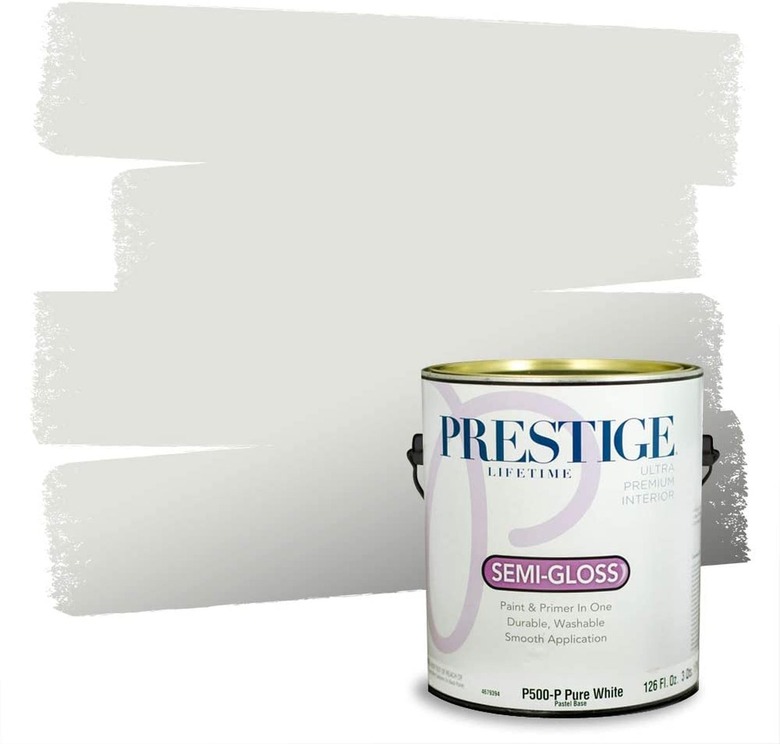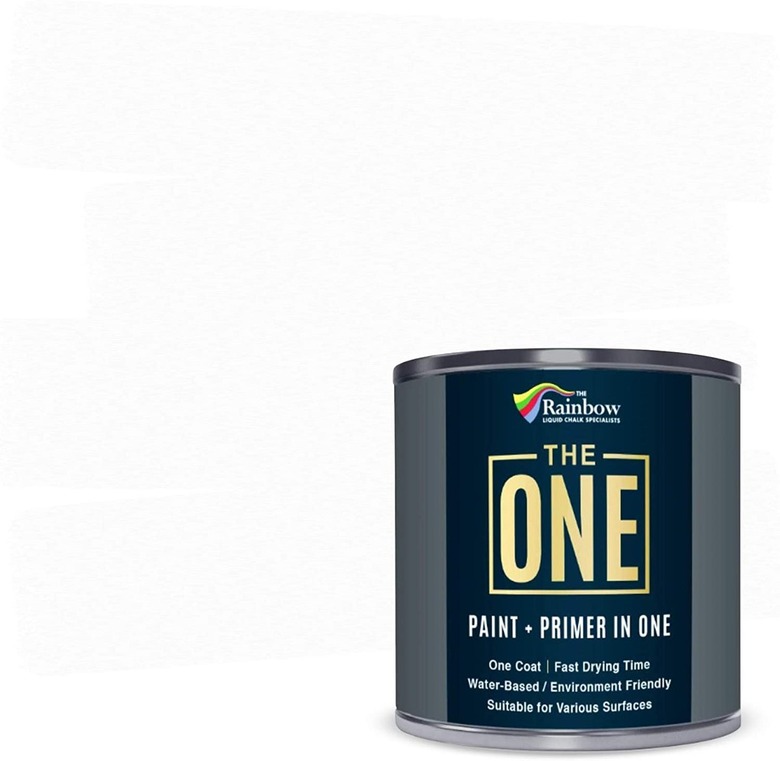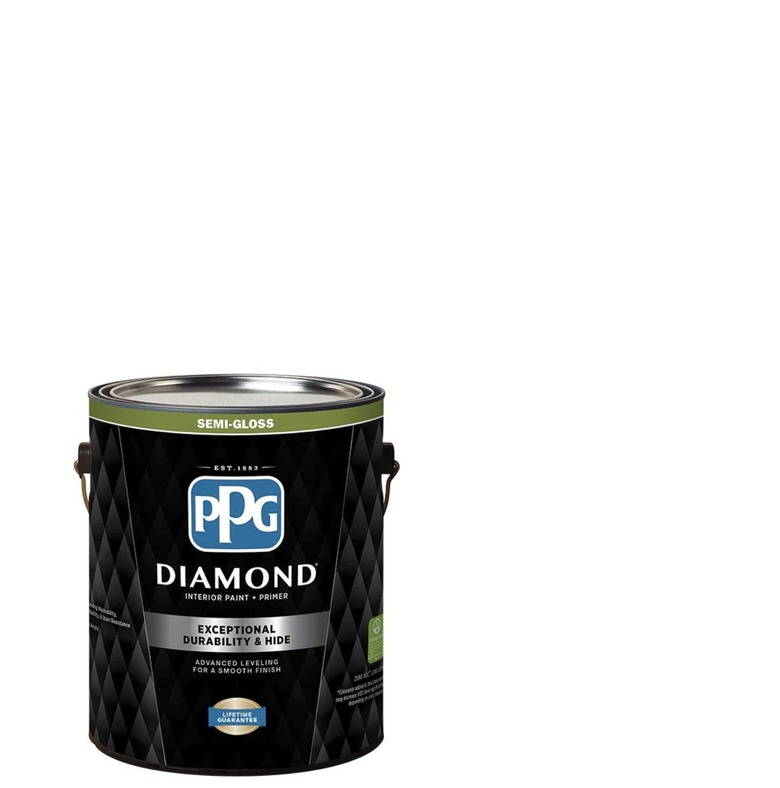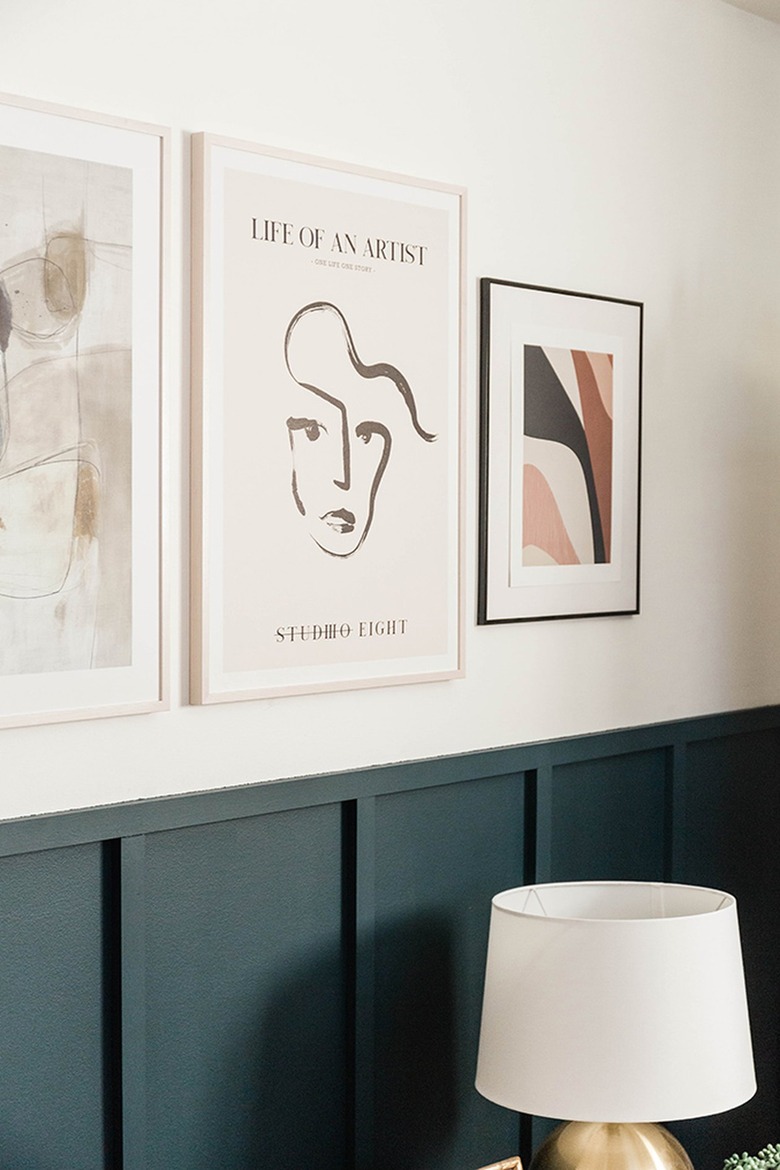The 8 Best One-Coat Paints For Your Project
While painting is considered to be one of the "easier" home improvement projects, it still comes with a long to-do list in many cases. Plus, it takes quite a bit of effort and hours of drying time — or you may decide you need a professional to get the job done. However, before you throw in the towel altogether there is one solution that might just make all of the difference. Enter: one-coat paints.
Trending at the moment, one-coat paint options are comprised of acrylic and latex that make for a thicker, more color-saturated coat. A one-coat paint and primer can help you save a lot of time and energy since you can accomplish two steps at once. Not to mention, you won't need to use as much paint, so it can save you money, too. And if all of that wasn't enough, it's also stain-resistant, which is perfect for busy households that experience splashes and splatters on the walls from time to time.
Most experts agree that one-coat paint is really as good and effective as it claims to be. It carries 20% more paint solids, meaning that it's already a step up — when it comes to thickness and body — from paint that requires multiple coats.
But what areas of the home would benefit the most from one-coat paint? Will it stand the test of time, and stains? When shouldn't you use one-coat paint? And what are the best one-coat paint options out there? Read on for answers to all of these questions.
Factors to Consider When Choosing One-Coat Paint
Factors to Consider When Choosing One-Coat Paint
Now that you're familiar with the basics of one-coat paint, you should know that it does have some limitations.
When you're covering oil-based paint with water-based latex, or if you're changing the sheen of your paint — for example, going from flat to glossy — you should use a separate paint and primer instead of using a paint and primer in one. The same is true if you're painting fresh drywall that's never been painted before.
One-coat coverage can be achieved with a variety of finish options, including flat, eggshell/satin, semi-gloss, and high-gloss.
When Should You Use One-Coat Paint?
When Should You Use One-Coat Paint?
For the space you'd like to refresh, if the existing color is close to your desired one-coat paint choice, the outcome will likely be better. But if you're dealing with existing glossy paint and trying to cover it with a one-coat paint, the new paint color may seem as if it's "sliding off" of the underlying layer.
It's wise to consider the types of rooms and their traffic before landing on a one-coat paint. For example, low-traffic rooms or interior walls that aren't regularly subjected to water, humidity, and stains like living rooms, dining rooms, and bedrooms are ideal for standard, or flat, one-coat paint. On the other hand, high-traffic areas, like bathrooms and kitchens, will require a different kind of one-coat paint — a variety that is resistant to water.
If keeping your wall clean is top of mind for you, you should know that many one-coat paints are scrubbable. For instance, while flat one-coat paint is washable, it isn't best for scrubbing, and is ideal for low-traffic rooms. Semi-gloss, satin, and high-gloss one-coat paints are all scrubbable and known for their durability — especially high-gloss, which has maximum durability.
When Not to Use One-Coat Paint
When Not to Use One-Coat Paint
For a home improvement project, you should know that one-coat paint isn't always the best choice. If you're after top-level adherence with your paint, a separate primer instead of a paint-and-primer-in-one would be better. Also, a wall that's never been painted may not have the best results with only one coat of paint. Generally, wood, new drywall, or any new surface isn't suited for one-coat paint.
No matter what kind of paint you're applying, you should always be aware that there are inherent health risks associated with the painting process. One-coat paint is like any other paint, in that the fumes shouldn't be breathed in, particularly if it's used in a space with low ventilation. This is when it's recommended to wear a mask while you paint or choose a low-VOC one-coat paint that won't give off as much harmful gas.
Best One-Coat Paints to Use
1. Behr Marquee Ultra Pure White Matte Interior Paint and Primer
Experts agree that this one-coat paint is one of the best on the market. As a Behr premium paint, it has advanced stain-blocking properties, and its flat finish is ideal for low-traffic areas, such as hallways and family rooms.
2. Kilz Tribute Interior Paint and Primer in One
This Kilz one-coat paint has a higher price tag, but it's known for its superior quality. Available in several on-trend hues, it has an eggshell or satin finish, making it a washable paint that's good for moderate traffic areas.
3. Glidden Exterior Paint + Primer
Glidden is a trusted brand, and it continues to deliver with its one-coat paint. If you're looking to go this route for your exterior, this paint provides top-notch resistance to peeling and cracking. Plus, it's available in neutrals like Black Magic and Gray Marble.
4. HGTV Home by Sherwin-Williams Showcase Semi-Gloss Ultra White Tintable Interior Paint
In our opinion, you can't go wrong with Sherwin-Williams and its line of premium paints, and the brand's one-coat option is no exception. This white paint (which is tintable) has a semi-gloss finish, making it a great choice for high-traffic spots like bathrooms and laundry rooms. It also comes with a lifetime warranty.
5. HGTV Home by Sherwin-Williams Infinity Semi-Gloss Ultra White Tintable Interior Paint
For even more durability, take it up a notch with this Sherwin-Williams quality paint. The 100% acrylic enamel is the brand's "most durable finish," plus it's stain-resistant, anti-microbial, and backed by a lifetime guarantee. Not too shabby.
6. Prestige Interior Paint and Primer in One
This one-coat paint is a top pick because it comes in several neutral shades that will resist the trends for years to come. It is also a low-VOC paint, making it better for the environment and your health.
7. THE ONE Paint and Primer
This premium paint comes in a variety of dark colors ranging from shades of black to blue to brown. It's lauded for its fast-drying time, water base, and ability to adhere to a variety of surfaces, both indoor and out, including metal, brick, and glass.
8. PPG Diamond Pure White Semi-Gloss Interior Paint and Primer
Another low-VOC interior paint? This one-coat offering from PPG. It can be used for either interiors or exteriors and has a scrubbable finish with a high-gloss shine.
FAQs
FAQs
1. Does one-coat paint really save that much time?
Experts agree that one-coat paint, in many situations, is an effective and time-saving alternative to traditional paint.
2. Can one-coat paint go over a wall with oil-based paint?
Unfortunately, no. Since one-coat paint has a water-base and latex ingredients, it won't adhere to the wall as much as it should.
3. Can every room of the house handle the same kind of
one-coat paint?
Different areas of the home require different types of one-coat paint. For example, a low-traffic space, like the living room, can handle a standard, flat finish. But if you need to get scrubbing or you're dealing with a high-traffic space, like the bathroom or kitchen, go with a semi-gloss, satin, or high-gloss version that's highly scrubbable and can withstand water.
4. Can one-coat paint be used on my brand new, unpainted
walls?
Nope. Experts agree that one-coat paint should only be used on walls that have already been painted, and not brand-new drywall or other new surfaces.
Just a Few Things to Keep in Mind
Just a Few Things to Keep in Mind
The moral of the story is that one-coat paint can save you a lot of time if that's your top goal. But it isn't always the best choice, specifically when you're working with a room that's already covered in oil-based paint or has brand new drywall. Be careful when selecting your finish, since the one-coat paint finish will determine if you're able to simply wash the wall or scrub it if need be.
